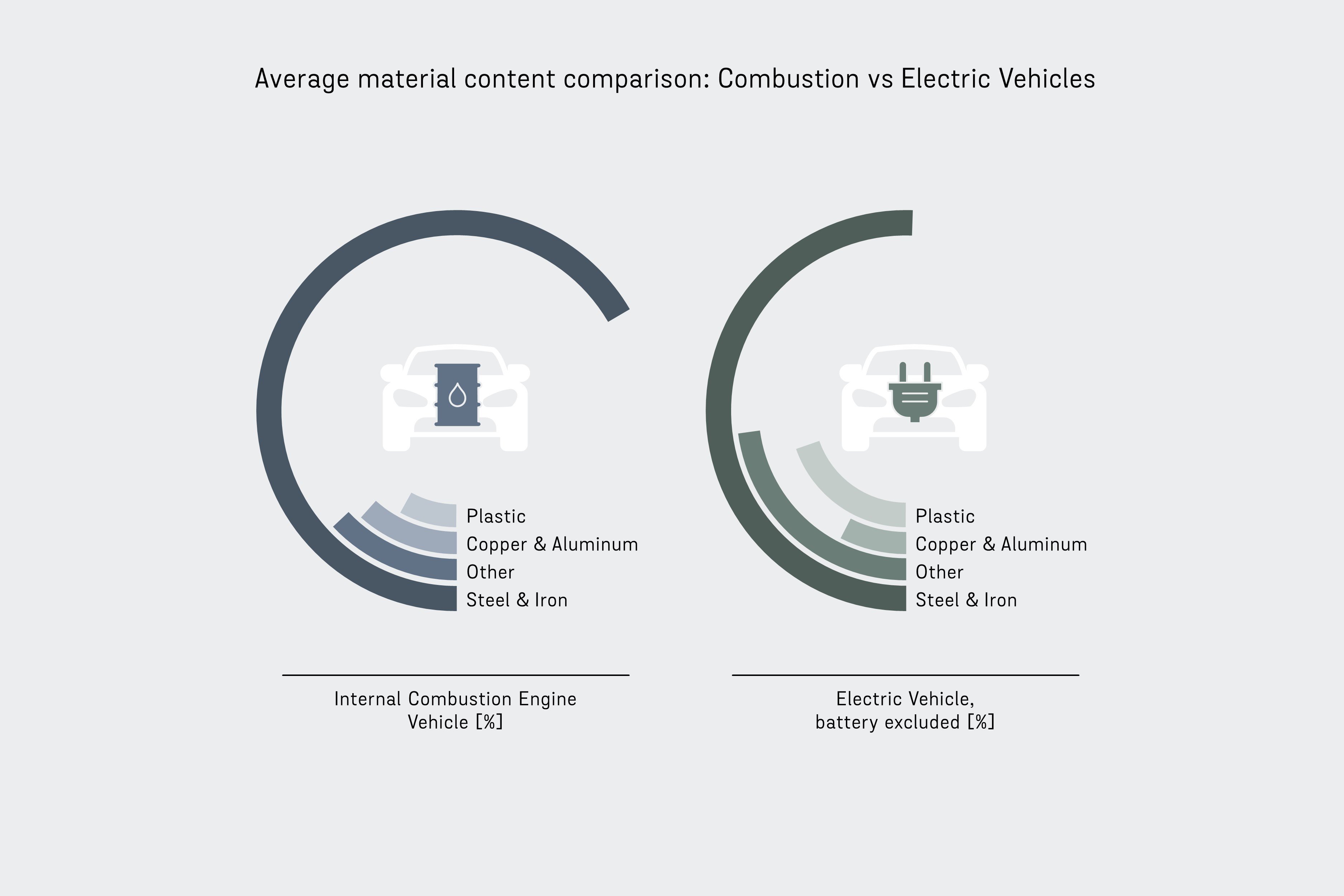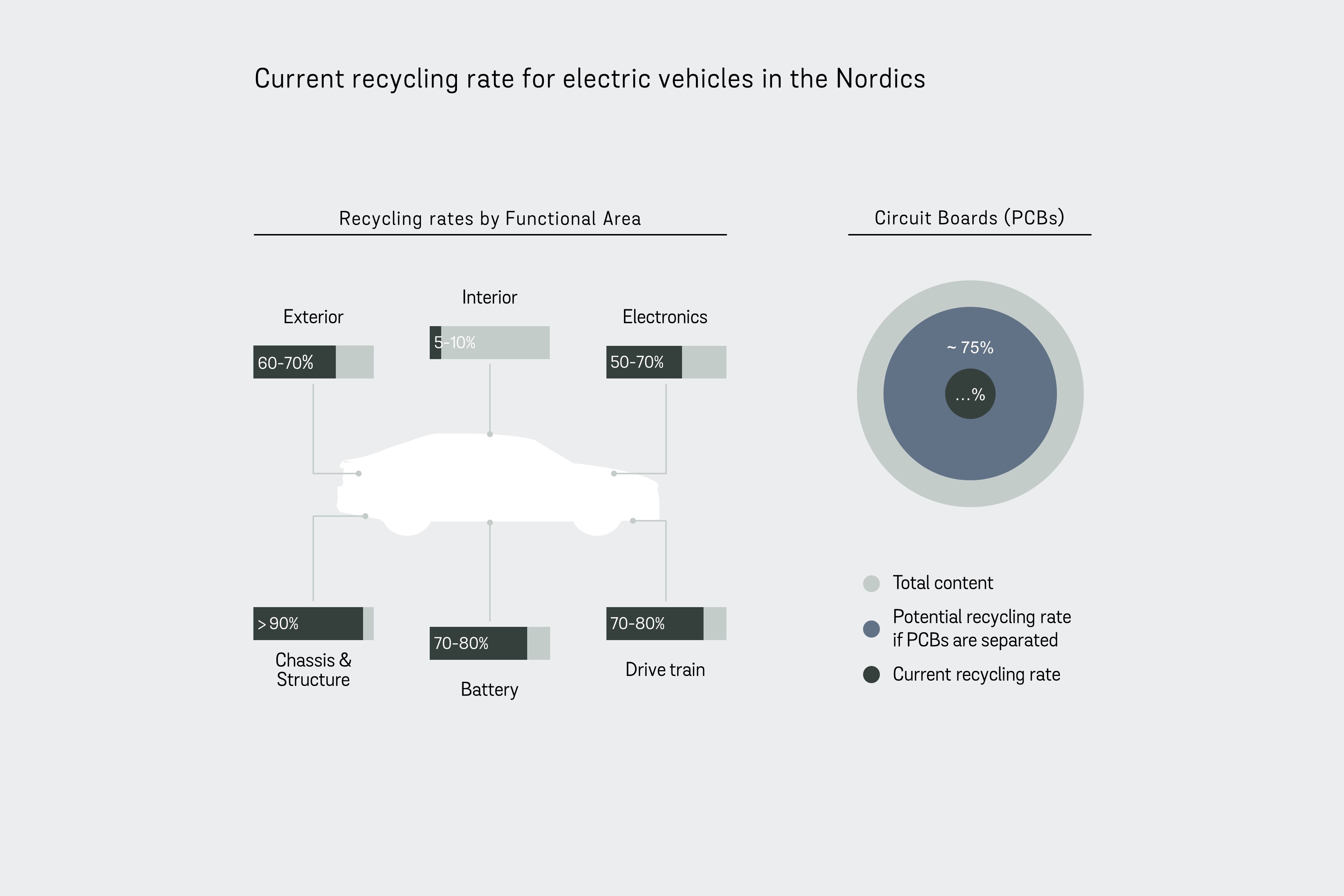
Recycling system mapping
We first analyzed the global vehicle and battery recycling system to determine the recycling potential for electric vehicles in Polestar’s key markets, considering geographical disparities in recycling systems, processes, and legislation.
The team discovered that the current systems, well designed for traditional cars, struggle with electric vehicles due to changes in components and materials used. Based on the comprehensive assessment, we developed an informed projection of the future demand and supply of recycled material for battery manufacturing.

